|
Danaus chrysippus / Plain Tiger
Shtegëtarja krisipus
Nymphalidae - Danainae
Danaus chrysippus (Linnaeus, 1758). TL: S. China.
 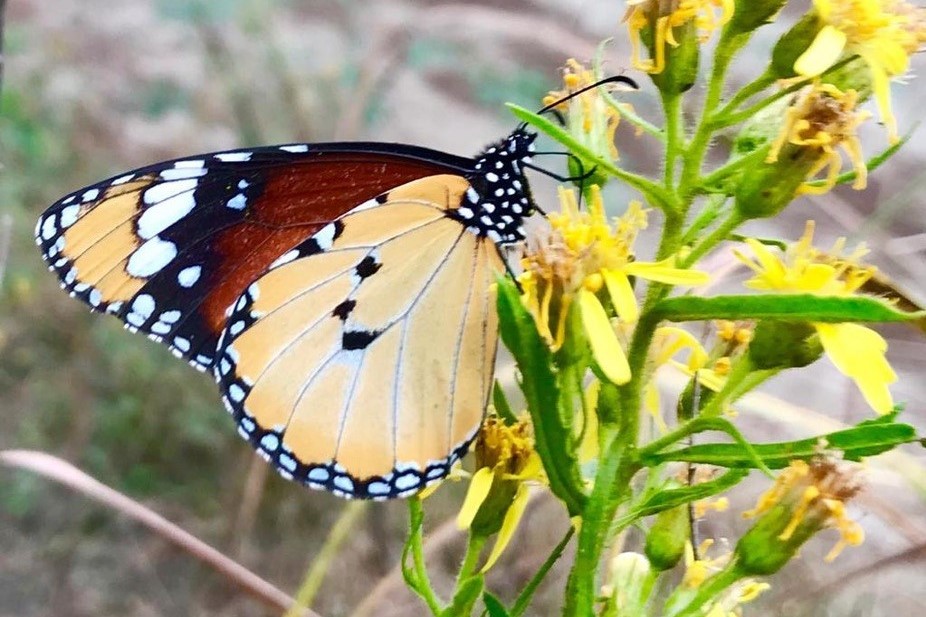
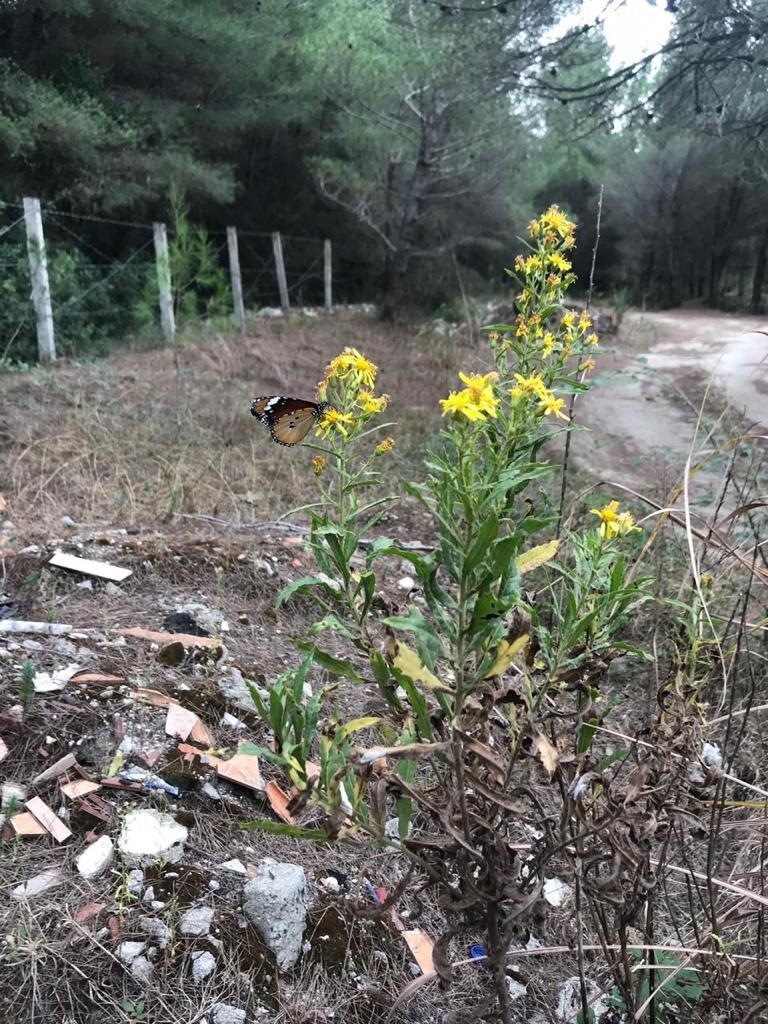 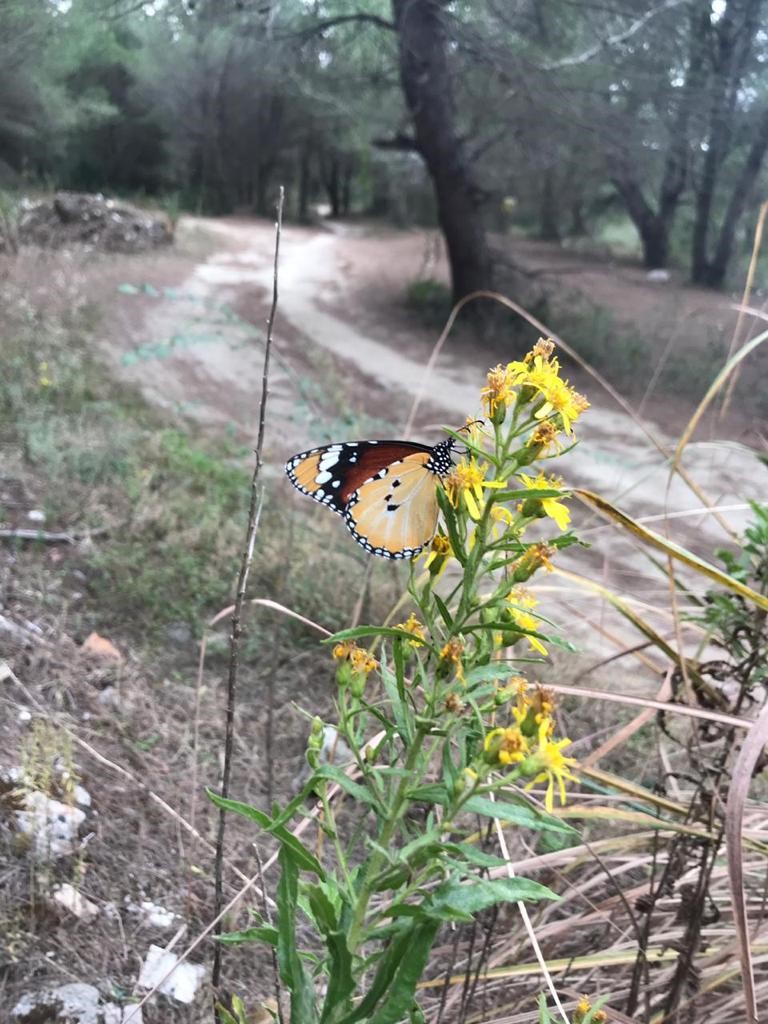 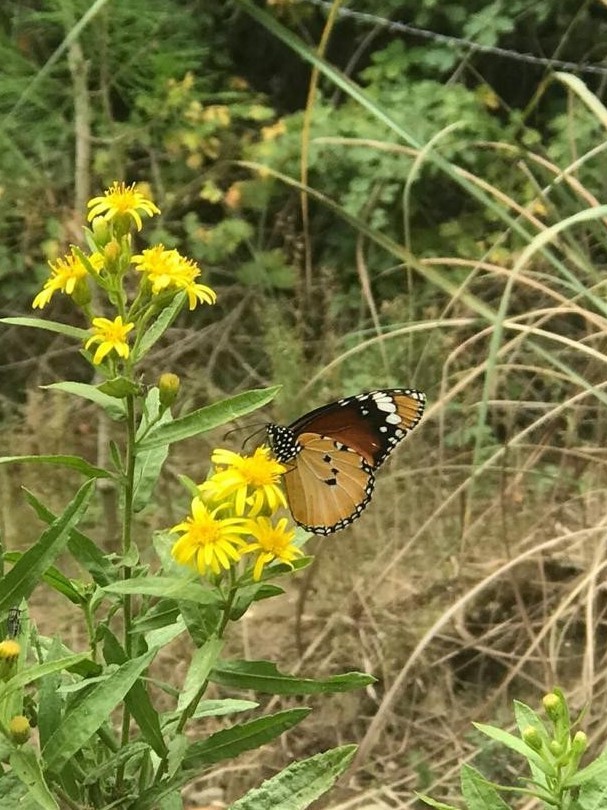
1a. Danaus chrysippus, distribution map (09.i.2025).  Historical data ; Historical data ;  Additional data from the 2018 update ; Additional data from the 2018 update ;  New observations since the 2018 update. New observations since the 2018 update.
1b. Danaus chrysippus underside. Near the Karavasta Lagoon, Albania (© Josif Paparisto)
1c. Habitat of Danaus chrysippus. Near the Karavasta Lagoon, Albania (©Josif Paparisto)
1d. Danaus chrysippus underside. Near the Karavasta Lagoon, Albania (©Josif Paparisto)
1e. Danaus chrysippus underside. Near the Karavasta Lagoon, Albania (©Josif Paparisto)
Note
Danaus chrysippus is a strong migrator sometimes reaching Albania where irregular coastal observations have been documented. In the Balkan Peninsula, temporary populations, especially later in the season, have been mentioned. Overwintering, as far as we know of, has not yet been proven. It is not clear if populations are able to survive longer term in this part of the Balkan Peninsula. Different Apocynaceae species are cited as hostplant in the checklist of European butterfly larval foodplants (url): Apteranthes burchardii, Araujia sericifera, Asclepias curassavica, Cynanchum acutum, Gomphocarpus fruticosus and Gomphocarpus physocarpus. As well C. acutum as G. fruticosus were mentioned (Habeler 1996) as hostplant of D. chrysippus in Greece. G. fruticosa has often been cited and is confirmed by SC from Perdika (Epirus, Greece), at only 35 km south of Albania. G. fruticosus is know from Borsh (Vlorë County, southern Albania) but not from the area around the Karavasta Lagoon where Periploca graeca is the only Apocynaceae known (personal communication Lulëzim Shuka, November 2022). P. graeca is listed as one of the hostplants in Anatolia (Turkey). AP did not observe caterpillars or pupae as the butterflies were in full emergence but this observation could represent a new hostplant for D. chrysippus in Europe. To be confirmed.
Description
♂♂
Large butterfly. Fw: 35-42 mm.
Ups: light tawny-brown gc.
Upf: darker chestnut-brown near base, broad black apex with white transverse band, small white submarginal spots.
Uph: three small black discal spots and sex-brand on v2, black marginal band with small white spots.
Uns: slightly paler gc, similar markings.
Unh: black marginal band with larger white spots.
♀♀
Greater, similar except absence of sex-spot on uph.
Similar species
None.
Life cycle
Adults: the overwintering stage but largely depending of climatic conditions and probably not possible in Albania.
Depending on migration from the south, some years continuous generations from April to late November.
Egg: probably short.
Caterpillar: short stage.
Pupa: short stage.
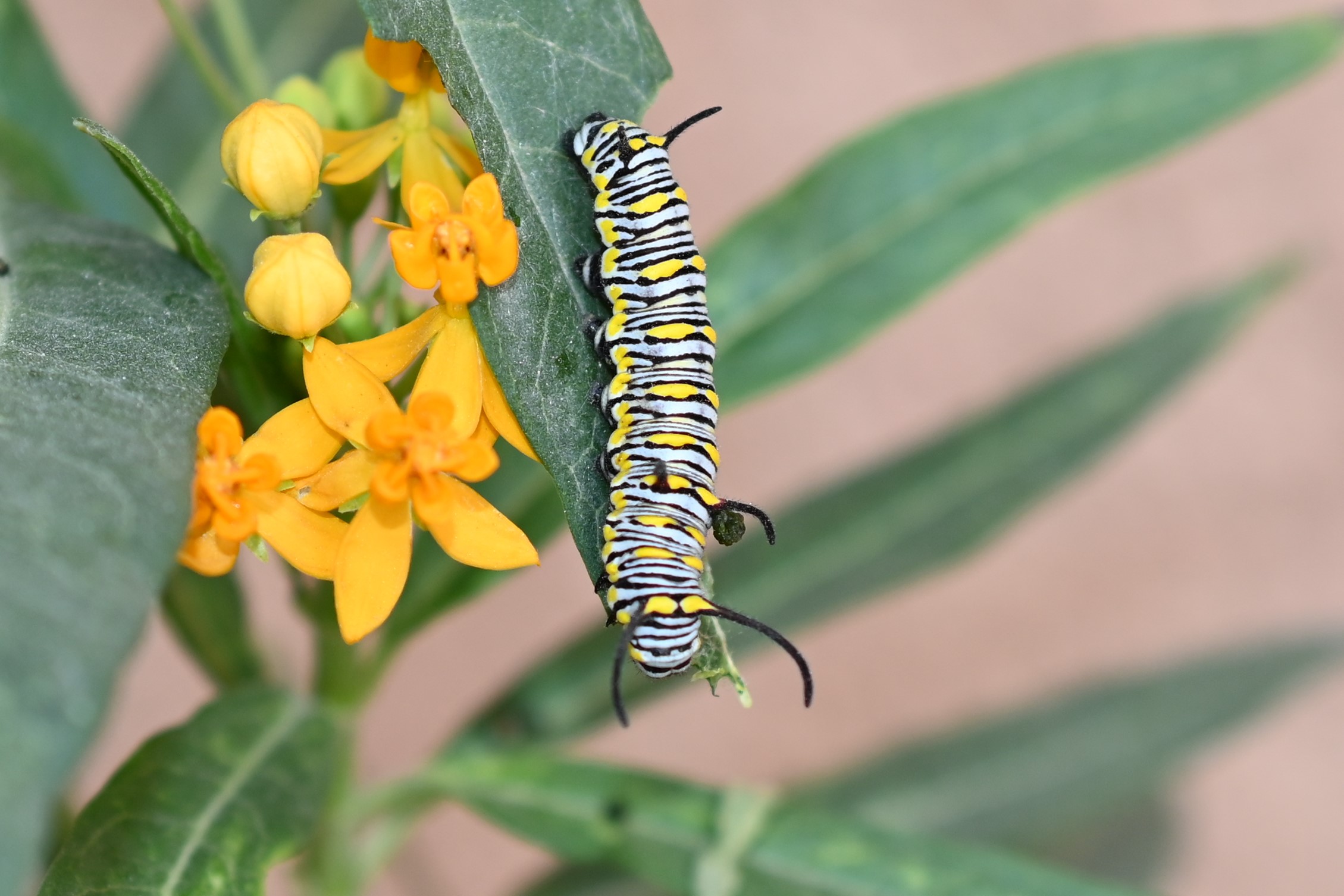 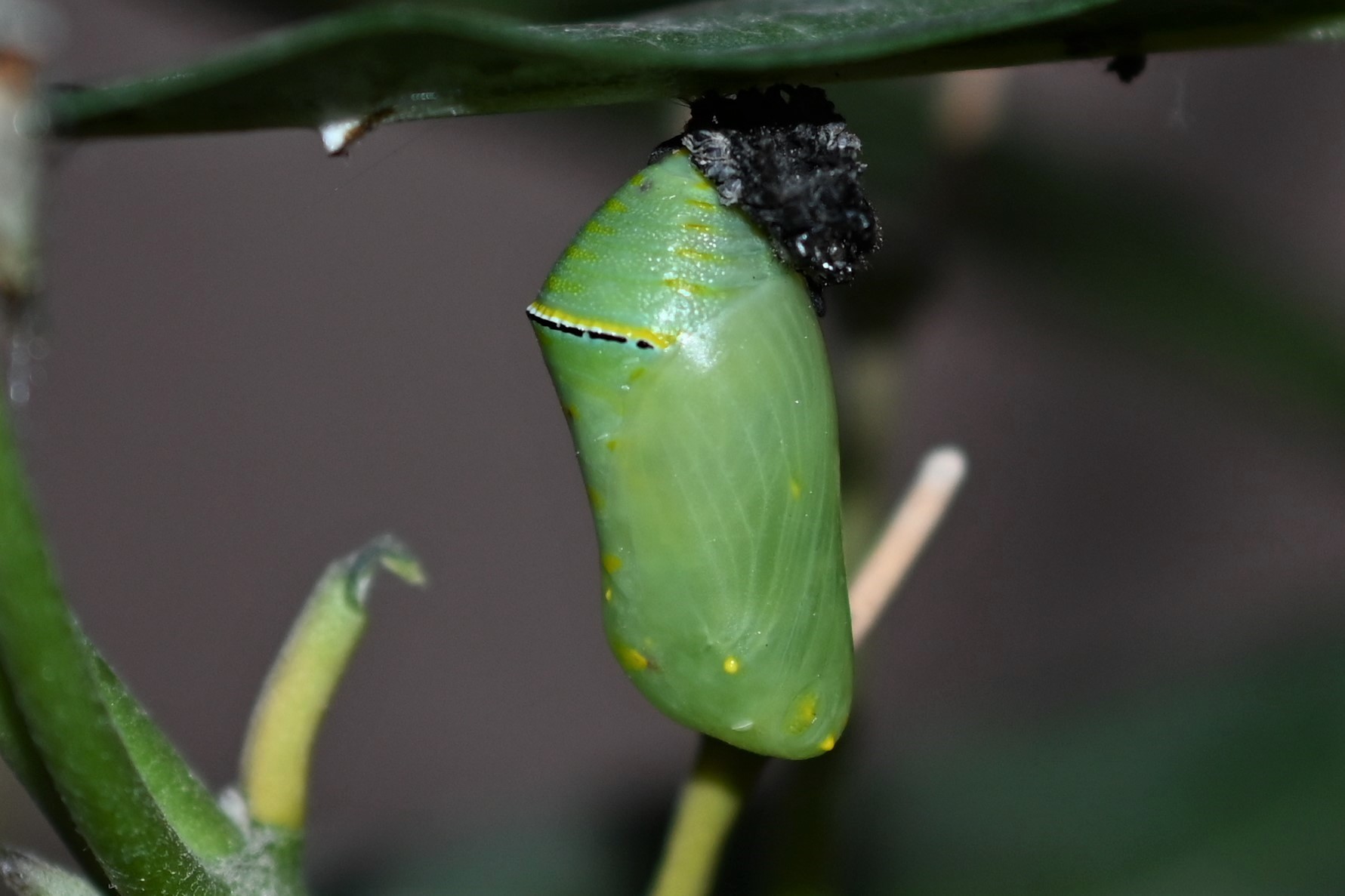
2a. Danaus chrysippus, caterpillar. Kuwait (© Mohammad Marafi)
2b. Danaus chrysippus, pupa. Kuwait (© Mohammad Marafi)
Habitat
Danaus chrysippus inhabits open rough places from lowland and nomads can be seen up to 1000 m a.s.l.
Spatial requirement moderate, population density can be high.
Foodplants
Caterpillars feed on Araujia sericifera, Cynanchum acutum and Gomphocarpus fruticosus.
Butterflies are feeding on higher flowers and Rubus sp.
Distribution
Albania: local.
Balkan: AL - BG - BIH - GR - HR - NMK - MNE - RKS - RO - SLO - SRB
Europe: IB - IT - ALP - BAL - NWE - UK - SCA - EEU (migrating)
Asia Minor, Near East and further east.
Conservation status
Danaus chrysippus is not endangered.
Albanian Red List: LC.
IUCN Red List, category at the Mediterranean level: LC.
Useful links
Pyrgus.de
Lepiforum
Euroleps
(url) Cuvelier S., Parmentier L., Qirinxhki X. & Paparisto A. 2023. Butterflies of Albania new data and going online. Fluturatat e Shqipërisë të dhëna të reja dhe faqja online (Lepidoptera: Papilionoidea) — Buletini i Shkencave te Natyres, Tirana university. 32(2022): 5-31.
Habeler H. 1996. Beobachtungen an Danaus chrysippus Linnaeus 1758 in Nordwestgriechenland (Lep., Danaidae). — Mitteilungen der Abteilung für Zoologie am Landesmuseum Joanneum, Graz. 50: 77–78.
|
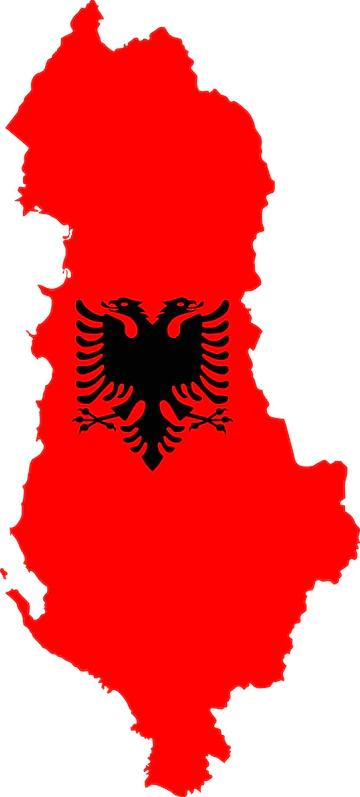 xx
xx 





 Historical data ;
Historical data ;  Additional data from the 2018 update ;
Additional data from the 2018 update ;  New observations since the 2018 update.
New observations since the 2018 update.
